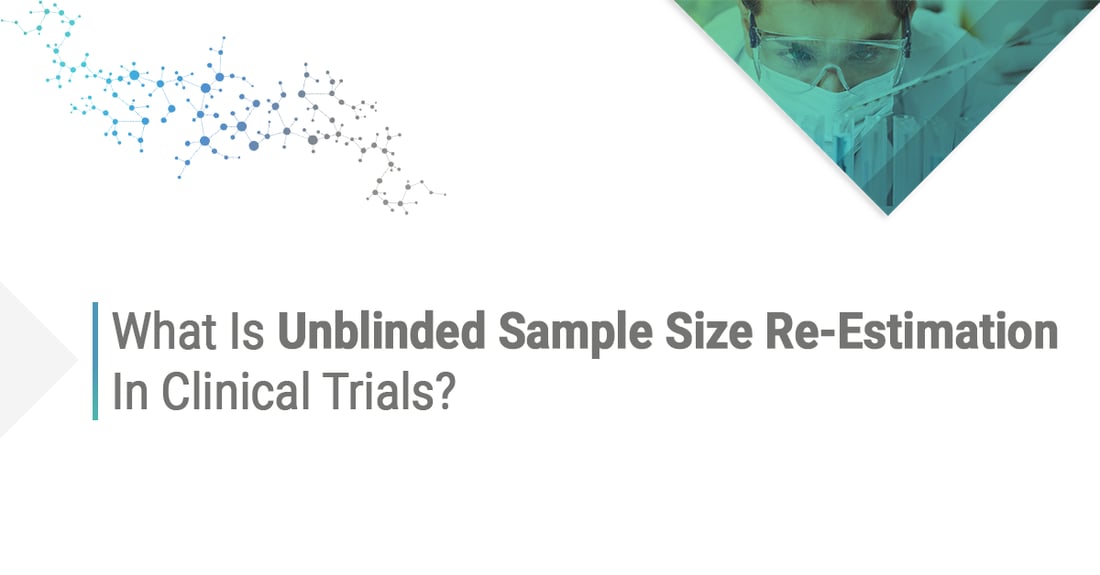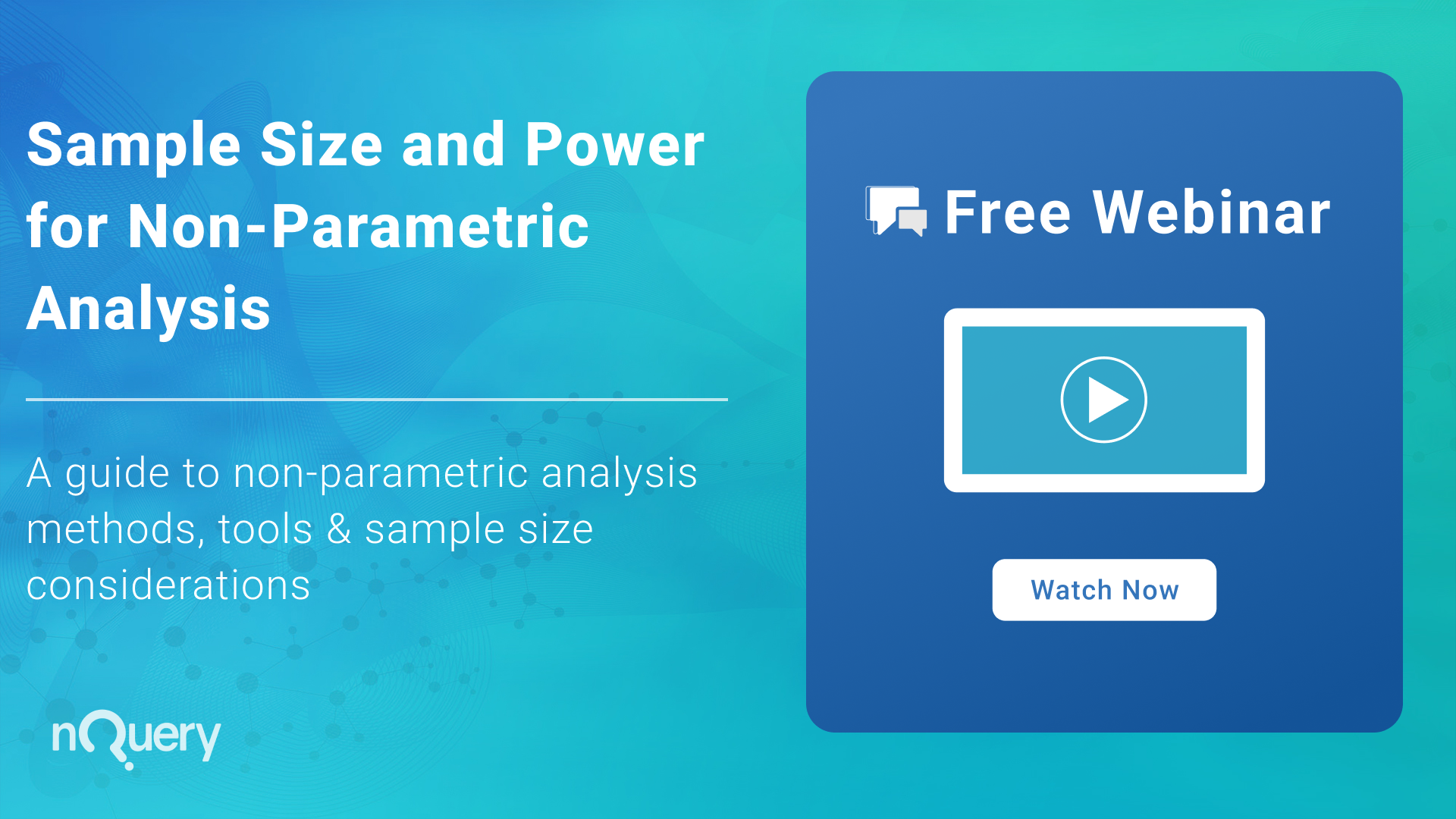What is unblinded sample size re-estimation in clinical trials? Let us quickly examine this topic and what it means for you.

What is unblinded sample size re-estimation (SSR) in clinical trials?
This video is an excerpt from our webinar The Advantages & Disadvantages of Adaptive Sample Size Re-Estimation.
There are two primary types of (SSR) sample size determination. These are blinded and unblinded sample size re-estimation. Unblinded Sample Size Re-estimation builds on conditional power. This and the other statistical concepts that are required for a sample size calculation are covered below.
Conditional power
Conditional power is the probability of rejecting the null hypothesis, (finding significant p-value effectively), given your current interim estimate for the effect size. This calculation requires you to still make an inference about what's the true effect size, in the population, and obviously that's quite a strong assumption.
Conditional power isn't just used in unblinded sample size re-estimation. It's also used for futility testing, in a more flexible way than the group sequential method but also in a more ad hoc way, meaning it has less guaranteed error control. In regards to sample size re-estimation, conditional power is used to define what a promising result is.
"Promising" is a conditional power which is less than but sufficiently close to your target conditional power and the target conditional power is usually just the original power you had for your studies, so 80% or 90%. If you have a conditional power of 60% based on interim estimates of an effect size, that's a sufficiently high conditional power that's promising relative to our initial target power of 80%.
In the case of doing unblinded sample size re-estimation such as our example above, we'll be doing it in the context of attaching it as an addition to a group sequential design. However, this is not necessarily the only way of doing unblinded sample size re-estimation.
Promising
You’ve now established what conditional power is, which is what you’ll be using to define what ‘promising’ is. It’s also established that group sequential design will be used as the bedrock on which an unblinded sample size re-estimation can be done.
An unblinded sample size re-estimation is done by increasing the sample size in response to an interim effect size which is ‘promising’. The uncertainty that you’re taking from the initial sample size determination will be around the effect size.
If you have an effect size with a difference of 1 or and odds ratio of 2 which ended up being slightly wrong, less than expected, the idea of ‘promising’ defined by you as the trialist is always based on this unblinded effect size.
This extends group credential design to a third option at each of your interim looks from continue and stop early to also increasing your sample size and then continue with appropriate adjustments if required.
Power for Optimistic Effect
You can have power for optimistic effect while also having the ability to adaptively increase your sample size, so that you can find lower but still clinically relevant effect sizes. This will cover you for a situation where the effect size is slightly lower than expected but still be clinically relevant and receive regulatory approval.
The FDA guidance that was published last year was in regards to a design that can provide efficiency. Conditional Power is the most common criteria proposed.
2 x Methods for Unblinded SSR: Chen, DeMets & Lan, Cui Hung & Wang
Chen, DeMets & Lan allows you to use Group Sequential Design statistics as long as the unblinded sample size re-estimation occurs at the penultimate look. This is so that you know the last interim look before the final analysis and if the Conditional Power falls within a certain range.
In the Cui, Hung & Wang approach, these restrictions don’t exist. It allows you to do an unblinded sample size re-estimation at any look in your design and for any Conditional Power. This is useful where you have to use a weighted statistic and aren’t using the same statistic as a group sequential design. However, this may lead to a comparability issue.
Learn more about Adaptive Clinical Trials
The topics discussed here are excerpts from the full webinar Advantages & Disadvantages of Adaptive Sample Size Re-Estimation. You can watch this webinar on demand by clicking the image below.

In this webinar you’ll learn about:
- Advantages & Disadvantages of Adaptive Design
- Evaluating Unblinded SSR for your trials
- Evaluating Blinded SSR for your trials
If you are exploring adaptive designs, one important factor is to select trusted software that is designed for your task. nQuery has dedicated adaptive trial design functionality that contains a selection of sample size tables designed specifically for areas of adaptive design.




















Comments (2)